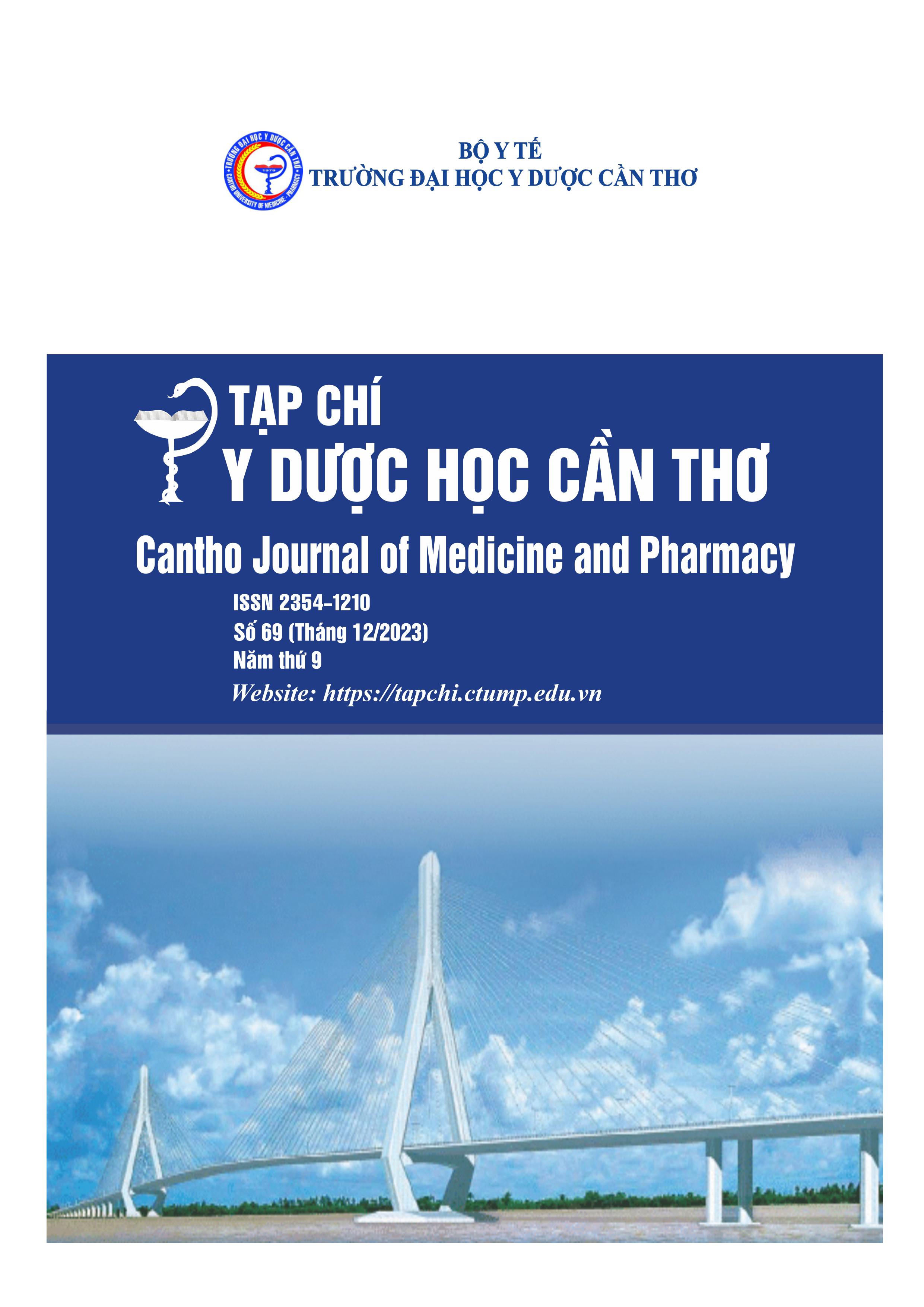ROLE OF LACTATE CLEARANCE IN DEATH PROGNOSIS IN SEPTIC SHOCK PATIENTS
Main Article Content
Abstract
Background: Septic shock is a common disease in the intensive care units with a high mortality rate of about 40-60%. The treatment of this is a great challenge which requires many different methods. Serum lactate is an indrirect parameter reflecting the perfusion status of organs commonly used in sepsis and septic shock. Lactate clearance plays as a mean to monitor tissue perfusion recovery and the outcome of shock resuscitation, thereby improving treatment efficacy. Objectives: To determine the mortality prognostic value of lactate serum clearance in patients with septic shock. Materials and methods: A prospective study on 130 septic shock patients in Kien Giang General Hospital. Results: The mortality rate was 60.8%. Serum lactate median was 5.48mmol/L. There was a significant difference in lactate clearance between the living and the dead, that the living group had higher lactate clearance compared with the death one. Lactate clearance at 6h and 12h post-hospitalization were 0.809 and 0.847 respectively, with p<0.001. The optimal cut-off point of lactate clearance after 6 hours of admission was -1.76% (with sensitivity of 82.3% and specificity of 78.4%) and at 12 hours of admission was -10.56% (with sensitivity of 86.1% and specificity of 86.3%). Conclusions: Lactate clearance at 6 hours and 12 hours after admission is a worthy measure in predicting mortality in patients with septic shock.
Article Details
Keywords
Septic shock, blood lactate, lactate clearance
References
2. Singer M., Deutschman C., Seymour C., et al. The Third International Consensus Definitions for Sepsis and Septic Shock (Sepsis-3). JAMA. 2016. 315(8), 801-810, doi: 10.1001/jama.2016.0287.
3. Dương Thiện Phước, Nguyễn Trung Kiên, Nguyễn Tấn Đạt. Nghiên cứu nguyên nhân, một số yếu tố liên quan đến mức độ nặng và đánh giá kết quả điều trị choáng nhiễm trùng tại Khoa Hồi sức tích cực – Chống độc Bệnh viện Đa khoa Trung ương Cần Thơ năm 2016-2017. Tạp chí Y Dược học Cần Thơ. 2018. 11-12, 1-8.
4. Nguyễn Viết Quang Hiển. Nghiên cứu giá trị của presepsin huyết tương trong chẩn đoán và tiên lượng bệnh nhân nhiễm khuẩn nặng và sốc nhiễm khuẩn. Luận án tiến sĩ y học. Viện nghiên cứu khoa học Y Dược lâm sàng 108. 2019.
5. Lâm Phương Thúy. Nghiên cứu đặc điểm lâm sàng, cận lâm sàng và đánh giá kết quả điều trị sốc nhiễm khuẩn có lọc máu liên tục tại Bệnh viện Đa khoa Thành Phố Cần Thơ năm 20202021. Luận văn Chuyên khoa cấp II. Trường Đại học Y Dược Cần Thơ. 2021. 42.
6. Trương Dương Tiển, Phạm Thị Ngọc Thảo, Đỗ Quốc Huy, Đặng Vạn Phước. Nghiên cứu vai trò độ thanh thải lactate máu động mạch trong điều trị nhiễm khuẩn huyết nặng và sốc nhiễm khuẩn. Tạp chí Y học Việt Nam. 2017. 454(1), 264-268.
7. Bùi Thị Hương Giang. Nghiên cứu một số thông số huyết động và chức năng tâm thu thất trái ở bệnh nhân sốc nhiễm khuẩn. Luận án tiến sĩ y học. Đại học Y Khoa Hà Nội. 2016, 65.
8. Lê Hồ Tiến Phương, Phạm Thị Ngọc Dao, Mai Văn Muống. Giá trị tiên lượng tử vong của độ thanh thải lactate máu trên bệnh nhân nhiễm trung huyết và sốc nhiễm khuẩn tại Khoa Hồi sức tích cực Bệnh viện Đa khoa trung tâm An Giang. Tạp chí Y Dược học Cần Thơ. 2021. 42, 231-232.
9. Đoàn Đức Nhân, Ngô Văn Truyền. Nồng độ cortisol máu và kết quả bổ sung glucocorticoid trên bệnh nhân sốc nhiễm khuẩn có suy thượng thận cấp tại khoa Hồi sức tích cực- Chống độc bệnh viện Đa khoa Trung ương Cần Thơ. Tạp chí Y Dược học Cần Thơ. 2020. 26, 75-82.
10. Marty P., Roquilly, A., Vallee, F., et al. Lactate clearance for death prediction in severe sepsis or septic shock patients during the first 24 hours in Intensive Care Unit: an observational study. Ann Intensive Care. 2013. 3(1), 3, doi: 10.1186/2110-5820-3-3.


